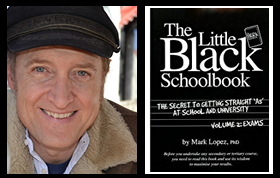Dr Mark’s The Meaning in a Nutshell
Rob Sitch (director), Santo Cilauro, Tom Gleisner, Jane Kennedy and Rob Sitch (writers), The Castle (1997)
The comedy-drama The Castle (1997) was directed by Rob Sitch who co-wrote the film with Santo Cilauro, Tom Gleisner and Jane Kennedy. It tells the sentimental story of a loving and happy working-class and small business Australian family, the Kerrigans, whose quaint, blissful life in the down-market outer-Melbourne suburb of Coolaroo is interrupted by property developers who intend to evict the family, along with other families in the street, to purchase the Kerrigan’s house and land to facilitate the expansion of the nearby airport. Feeling as if they have been pushed into a corner, the Kerrigan’s fight back in the courts and, after an initial setback, win their case and keep their home. In this manner the film celebrates individualism and the ‘Australian dream’ of home ownership along with the distinctive charms of ordinary working-class life, values shown to be shared by people of many ethnicities in the multicultural Australia of the early 1990s. The film also portrays a struggle of the little man versus the system (big business and big government) in order to show that ordinary people can win and fairness and justice can prevail.
The title of the film comes from the idiomatic phrase, ‘A man’s home is his castle’, which evokes the notion that on one’s own property one can live as one pleases. This notion is consistent with a concept of individualism that treats individuals as autonomous entities who have the liberty to purse happiness in their own fashion, as the members of the Kerrigan family are shown to do. The title also celebrates the Australian dream, shared by many Anglo-Australians along with many migrants from diverse backgrounds, which is that home ownership is both desirable and achievable and that this can provide the basis for a satisfying family life.
In this context, the film distinguishes between a house and land (marketable property) and a home, which provides a sense of place and is a site of great emotional significance that is associated with the shared love and memories of family life involving all the major events (like marriages) and a myriad of little experiences of sentimental value.
The film is firmly on the side of ordinary working class and small business people who live according to the values of what could be considered to be a working-class culture. It portrays these people as warm, loving, fun-loving, decent people who live in a fairly traditional family structure with the father as the principal breadwinner and the mother as the principal nurturer and homemaker. This provides the ideal environment to raise children to become well-adjusted, decent adults. They do not have much in terms of material possessions or status symbols but they find the beauty in what they have and, for them, this seems to be the secret to their happiness. What many people may perceive as ordinary, the Kerrigans perceive to be wonderful.
However, this working class and small business family is vulnerable. While wealth can bring luxury it can also bring power, and the Kerrigans, with their limited wealth, are vulnerable to big business and big government interests that have the wealth and power to push them around. This results in a threat to their ability to keep the home that is the foundation of their happiness. The Kerrigan family is presented as having right on their side even though they lack the resources for a legal battle to save their home. Fortunately, some good fortune comes their way in the form of a charitable lawyer who is a Queen’s Counsel (QC), which enables them to win in the courts and save their home. They can therefore continue to live what they regard as ‘the good life’.
The film also celebrates Australia as a multicultural society, presenting a positive appreciation of the cultural and ethnic diversity brought by multi-ethnic immigration and refugee settlement programmes. People from diverse ethnic backgrounds are shown to get along well with Anglo-Australians and with each other. For example, the Anglo-Australian Kerrigan family has welcomed a Greek, Con, into their family as a son-in-law, and they get along well with their small-time Italian lawyer friend, Denis Denuto, and their Lebanese neighbour, Farouk.
The film also brings in the issue of Aboriginal land rights, suggesting that the Westerners who have settled in Australia are developing a concept of deeply appreciating their home that has some similarities to the Aboriginal concept of a spiritual association with their tribal ancestral lands. References are made to the Mabo court case and the successful campaigns of Aboriginal activists for the right to have tribal ownership (native title) over their traditional lands.
Student resources by Dr Mark Lopez
© Mark Lopez 2021 All RIGHTS RESERVED
The purpose of the concise notes of Dr Mark’s The Meaning in a Nutshell is to provide much needed help to students seeking to unlock the meaning of the texts with which they have to deal. (More elaborate notes are provided in lessons as part of my private tutoring business.)
Subject: The Castle meaning, The Castle themes, The Castle analysis, The Castle notes
